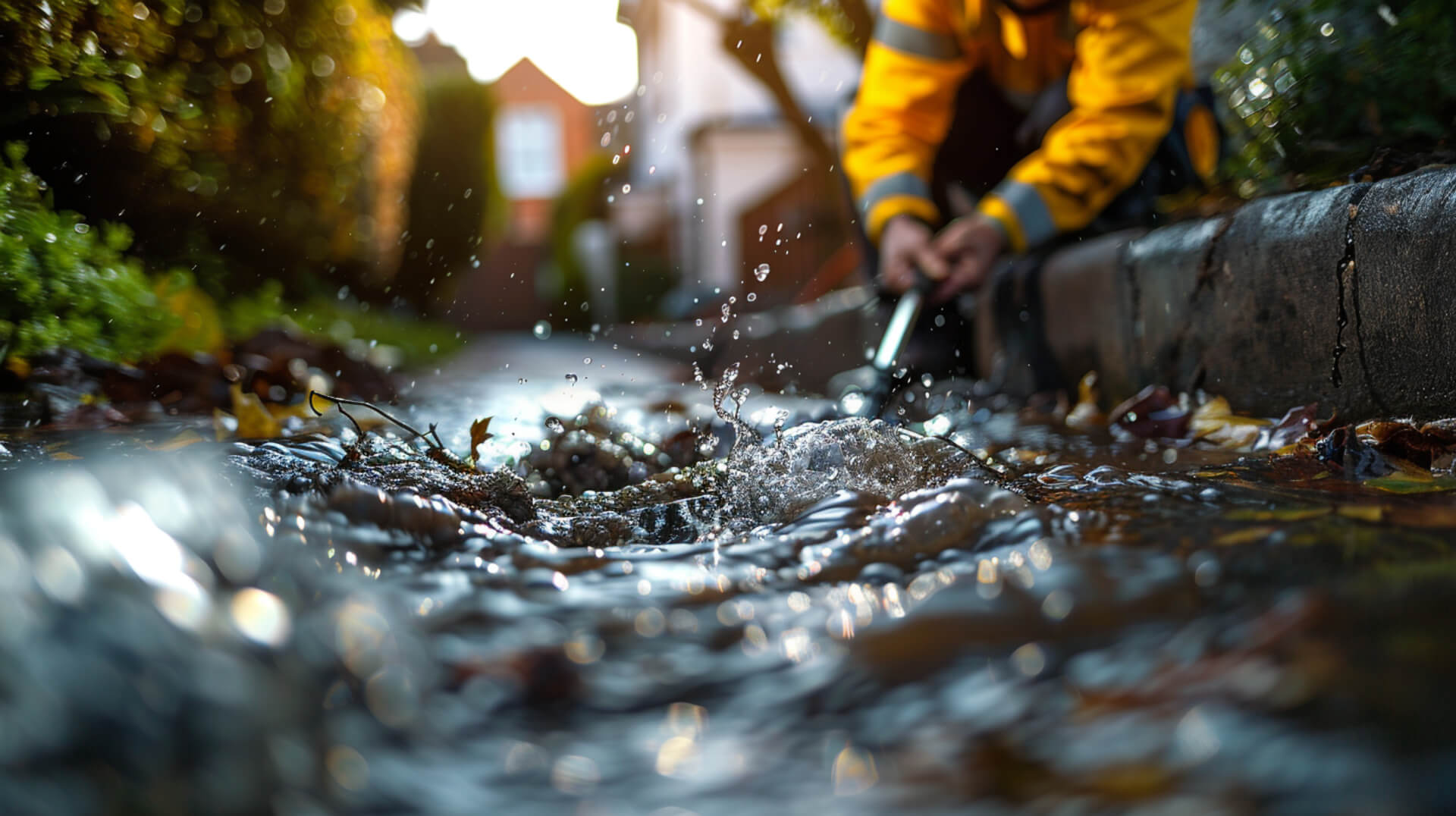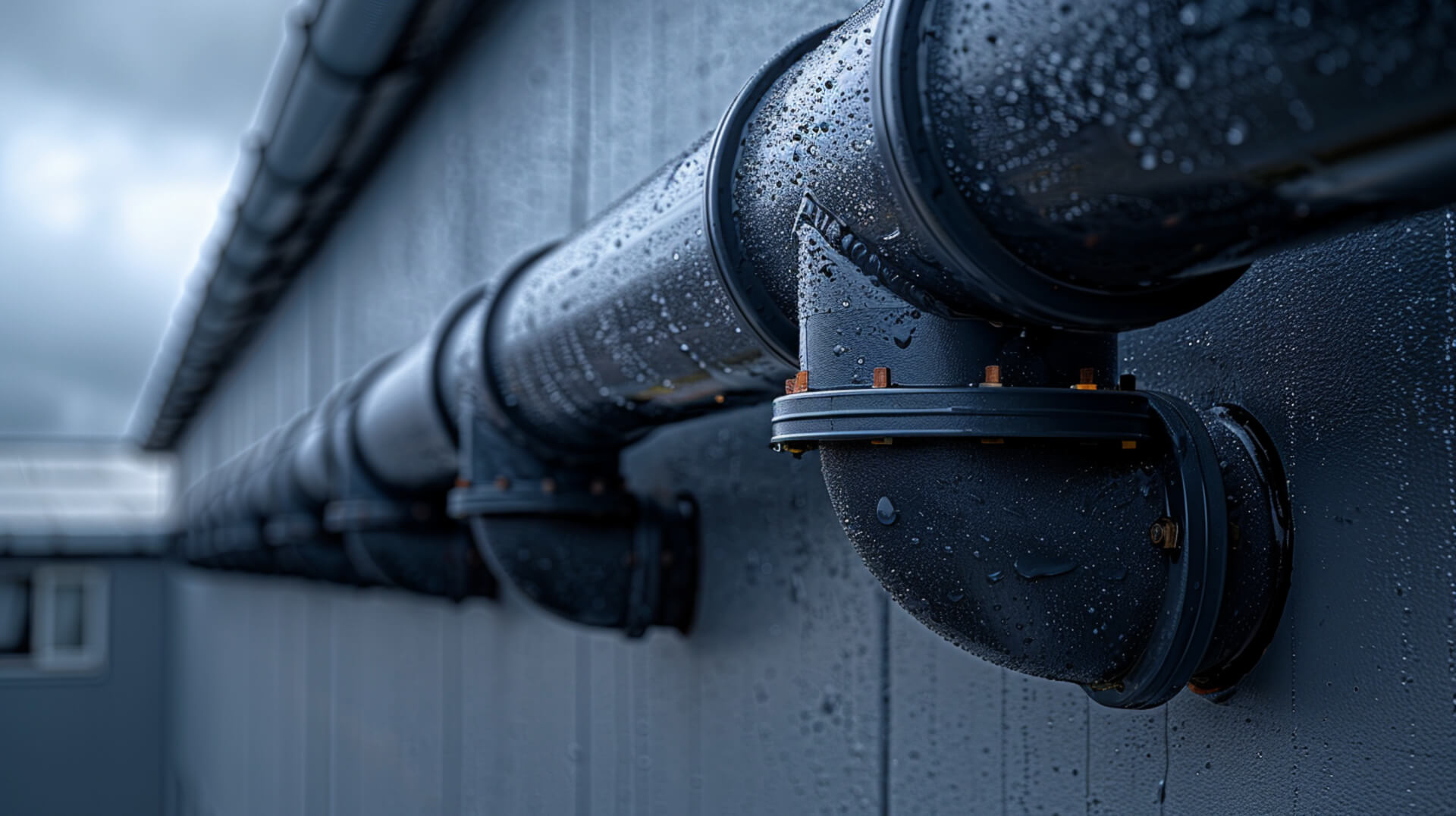 What Services Are Typically Included In A Drainage Maintenance Contract
What Services Are Typically Included In A Drainage Maintenance Contract

A drainage maintenance contract is a formal agreement between a service provider and a property owner, business owner, or facility manager. It outlines the scope of maintenance work to be performed on the drainage systems of the property. These contracts are pivotal in ensuring the proper functioning and longevity of drainage systems, which are critical to property management.
Purpose and Importance
The primary purpose of these contracts is to provide regular inspections, cleanings, and repairs of drainage systems to prevent issues such as blockages, flooding, and damage to property. Regular maintenance under these contracts can also help in identifying potential problems before they escalate, saving time and money in the long run.
Parties Involved
Typically, drainage maintenance contracts are entered into by property owners, business owners, and facility managers who are responsible for the upkeep of commercial, industrial, or residential properties. Service providers are usually specialised companies with expertise in drainage systems.
Benefits to Stakeholders
For property owners, business owners, and facility managers, these contracts offer peace of mind by ensuring their drainage systems are in optimal condition. This proactive approach to maintenance helps in avoiding unexpected disruptions, maintaining property value, and ensuring compliance with health and safety regulations. Moreover, it provides a clear financial benefit by potentially avoiding costly emergency repairs.
Routine Checks and Maintenance Included

When engaging in a drainage maintenance contract, property owners, business owners, and facility managers can expect a comprehensive suite of routine inspections and maintenance activities. These are designed to ensure the proper functioning and longevity of the drainage system.
Routine Inspections
Under a typical maintenance contract, professionals conduct regular inspections of the entire drainage system. This includes assessing surface and subsurface systems, gutters, and culverts for signs of potential issues.
Maintenance Frequency
The frequency of routine checks is typically bi-annual, although this can be adjusted based on the specific needs of your property or business. The goal is to preemptively identify and address issues before they escalate.
Inspected Components
Inspections cover all critical components of the drainage system, ensuring that everything from slope drainage to detention ponds is functioning correctly. This thorough approach is vital for identifying any irregularities that could lead to more significant problems.
Importance of Regular Maintenance
Regular maintenance is crucial for the longevity of the drainage system. It helps prevent common issues such as blockages, grease buildup, and the associated risks of flooding, which can lead to costly repairs if left unaddressed. By adhering to a scheduled maintenance plan, you ensure the health and efficiency of your drainage system, ultimately saving time and resources in the long term.
Emergency Response Services

In the realm of property management, the ability to swiftly address unforeseen incidents is paramount. Drainage maintenance contracts often include emergency response services to provide immediate assistance for urgent issues.
Criteria for Emergency Situations
An emergency within the context of these contracts typically encompasses any sudden and unexpected drainage failure that poses immediate risk to property, health, or safety. This includes severe blockages, flooding, and the release of hazardous materials.
Response Time for Emergencies
Service providers guarantee a rapid response to emergencies, often stipulating a 24/7 availability. The exact response time may vary but is usually within a few hours of the service call, ensuring that critical situations are addressed promptly.
Initiating Emergency Service Calls
Any individual responsible for the maintenance of the property, such as facility managers or maintenance staff, can initiate an emergency service call. In some cases, automated systems may detect and report anomalies directly to the service provider.
The Importance of Constant Availability
Continuous availability is crucial for mitigating the impact of drainage emergencies. It ensures that regardless of when an issue arises, support is readily accessible, thereby minimising potential damage and disruption to operations. This round-the-clock service is a cornerstone of effective property management, providing peace of mind and safeguarding against the unpredictable nature of drainage emergencies.
The Role of CCTV in Drainage Maintenance

CCTV technology serves as a critical tool in the maintenance of drainage systems, providing a non-invasive method to inspect and diagnose potential issues within the network.
Advantages of CCTV Inspections
CCTV inspections offer a detailed view of the drainage system’s internal state, allowing for the identification of problems such as blockages, structural damage, and pipe collapses. This advanced diagnostic tool is integral for fault identification, enabling targeted repairs without the need for extensive excavation.
Types of Issues Uncovered
Through high-resolution cameras, CCTV can reveal a range of issues, including:
- Accumulation of debris and grease
- Root ingress from surrounding vegetation
- Cracks and fractures in pipes
- Misaligned or collapsed pipe sections
Interpretation of CCTV Data
Trained professionals analyse the footage from CCTV inspections. They use their expertise to assess the condition of the drainage system and recommend appropriate maintenance or repair strategies.
Diagnostic Capabilities of CCTV
CCTV inspection is considered an advanced diagnostic tool due to its ability to quickly and accurately identify issues within the drainage system. This technology minimises the need for guesswork and reduces the time and cost associated with traditional inspection methods. For property owners, business owners, and facility managers, the inclusion of CCTV inspections in a drainage maintenance contract ensures that their systems are monitored with the highest level of precision and care.
Customization of Maintenance Schedules

Maintenance schedules within a drainage maintenance contract are not one-size-fits-all. They are adaptable to meet the unique demands of your property or business.
Tailoring to Specific Needs
Your drainage maintenance schedule can be customised based on several factors, including the type of property, the extent of the drainage system, and the specific industry requirements. For instance, a retail business may require more frequent checks compared to a residential property due to higher usage levels.
Influencing Factors
The customization of maintenance schedules takes into account:
- The property’s exposure to environmental elements
- The age and condition of the existing drainage infrastructure
- The volume of usage that the drainage system experiences
- Historical data on previous drainage issues
Collaborative Planning
Determining the optimal maintenance schedule typically involves collaboration between you and the service provider. This ensures that the plan aligns with operational requirements and minimises disruption to daily activities.
Importance of Schedule Flexibility
Flexibility in scheduling is essential for businesses to maintain continuity. It allows for maintenance work to be conducted during off-peak hours or closed periods, thereby reducing the impact on business operations. A tailored maintenance schedule is a proactive step towards ensuring the reliability and efficiency of your drainage system while accommodating the operational needs of your business.
Compliance and Regulatory Adherence
Drainage maintenance contracts are subject to a variety of regulations to ensure that services are performed to legal and environmental standards.
Adherence to Public Contract Regulations 2015
Service providers must comply with the Public Contract Regulations 2015, which govern the procurement of public sector contracts. These regulations ensure that public funds are used efficiently and that services are procured through fair competition.
Responsibilities Under UK Private Sewers Transfer Regulations 2011
The UK Private Sewers Transfer Regulations 2011 delineate the responsibilities between property owners and water authorities. Service providers are responsible for ensuring that their maintenance activities align with these regulations, which often involves the transfer of private sewers and lateral drains to water and sewerage companies.
Importance of Regulatory Compliance
Compliance with these regulations is not merely a legal obligation; it is crucial for the protection of the environment, public health, and the integrity of the drainage infrastructure. Non-compliance can result in significant fines, legal action, and damage to reputation. Therefore, service providers must be vigilant in adhering to all relevant regulations, ensuring that your drainage system is maintained not only to a high standard but also within the bounds of the law.
Preventive Measures and Common Issues

Preventive measures are a cornerstone of drainage maintenance contracts, designed to maintain system health and avoid the inconvenience and costs associated with drainage issues.
Implementing Preventive Actions
Service providers undertake a range of preventive actions to safeguard against common drainage problems. These include regular cleaning to prevent blockages, the removal of built-up grease and debris, and the use of odour control techniques.
Addressing Blockages and Odours
Blockages and odours are typically addressed through scheduled cleanings and inspections. High-pressure jetting and other advanced techniques are employed to ensure that drainage systems remain clear and functional.
Responsibility for Preventive Measures
The responsibility for implementing these preventive measures lies with the service provider under the terms of the maintenance contract. They are tasked with conducting the necessary work to prevent drainage issues proactively.
Significance of Preventive Care
Preventive care is essential for the health of the drainage system. It extends the system’s longevity, reduces the likelihood of emergency repairs, and ensures that the system operates efficiently. For property owners, business owners, and facility managers, these measures are a proactive way to manage potential risks and maintain the integrity of their drainage infrastructure.
Sector-Specific Services Offered

Drainage maintenance contracts often include services tailored to the unique needs of various industries, ensuring that sector-specific challenges are effectively addressed.
Variations Across Industries
The nature of drainage maintenance can differ significantly across sectors. For instance, the hospitality industry may require frequent grease trap maintenance, while healthcare facilities prioritise sanitary drain upkeep to prevent contamination.
Addressing Unique Challenges
Each industry faces distinct challenges related to its drainage systems:
- Hospitality: High usage and food waste leading to blockages.
- Education: Large campuses with extensive, ageing infrastructure.
- Healthcare: Strict hygiene standards and the disposal of medical waste.
- Fitness Facilities: Increased moisture and specific sanitation needs.
Beneficiaries of Tailored Services
Industry-tailored drainage maintenance benefits facility managers, property owners, and business owners by providing solutions that are cognizant of their specific operational requirements.
Importance of Customization
Customization in drainage services is crucial as it ensures that the maintenance provided aligns with the operational tempo, safety standards, and regulatory requirements of each sector. This targeted approach not only enhances the efficiency of the drainage system but also supports the core activities of the business, contributing to a seamless operational environment.
Environmental and Health Considerations in Drainage Maintenance Contracts

Drainage maintenance contracts are not only about maintaining the functionality of drainage systems but also about ensuring they contribute positively to the environment and public health.
Addressing Environmental Benefits
These contracts typically include measures that support:
- Water Damage Prevention: Regular maintenance helps prevent overflows and leaks that can lead to soil erosion and property damage.
- Erosion Control: Properly maintained drainage systems reduce the risk of erosion, preserving the natural landscape and infrastructure.
- Flood Risk Reduction: Clear and functional drainage systems are less likely to contribute to flooding, protecting ecosystems and communities.
Health Considerations
Health considerations are addressed through:
- Pest Management: Regular cleaning and repair of drainage systems help prevent pests, which can be vectors for disease, from breeding in stagnant water.
- Sanitation: Ensuring that waste water is efficiently removed and treated protects public health by preventing exposure to harmful contaminants.
Affected Parties
The environmental and health aspects of drainage maintenance impact a broad range of stakeholders, including property owners, tenants, local communities, and municipal authorities.
Importance for Property Management
Incorporating environmental and health considerations into drainage maintenance is essential for responsible property management. It ensures compliance with environmental regulations, promotes public health, and contributes to the sustainability of the property and surrounding areas.
Financial Implications and Cost Savings

Understanding the financial benefits of a drainage maintenance contract is essential for property owners, business owners, and facility managers. These contracts are structured to provide cost savings and budgeting advantages.
Cost Benefits of Maintenance Contracts
Maintenance contracts offer several cost benefits:
- Predictable Budgeting: Fixed pricing allows for better financial planning and eliminates unexpected costs from emergency repairs.
- Long-Term Savings: Regular maintenance prevents severe damage that could lead to expensive repairs or replacements.
- Efficiency: Tailored maintenance schedules ensure that services are only performed as needed, avoiding unnecessary expenses.
Budgeting for Drainage Maintenance
With a maintenance contract, you can allocate funds for drainage upkeep within your annual budget, ensuring that maintenance costs are predictable and manageable.
Who Should Consider These Contracts
Any entity responsible for property maintenance should consider these contracts, especially those looking to streamline operational costs and ensure financial predictability.
Cost-Effectiveness of Contracts
Drainage maintenance contracts are considered cost-effective because they help avoid the high costs associated with emergency call-outs and extensive repairs. By investing in regular maintenance, you are effectively reducing the risk of costly downtime and disruptions to your operations.
Challenges and Solutions in Drainage Maintenance

Maintaining a drainage system presents a variety of challenges, from routine blockages to more complex structural issues. Drainage maintenance contracts are designed to address these challenges through a combination of preventive measures and responsive solutions.
Common Drainage Challenges
Property owners often encounter issues such as:
- Blockages caused by grease, debris, or foreign objects
- Odours emanating from stagnant water or buildup
- Flooding risks due to inadequate drainage capacity or failure
- Slow drainage that indicates potential obstructions or damage
Proactive Solutions
Maintenance contracts typically include services to preemptively tackle these challenges:
- Regular cleaning to remove buildup and prevent blockages
- Inspections using CCTV to identify and diagnose issues early
- Scheduled maintenance visits to ensure system integrity
- Emergency response services to address urgent problems swiftly
Providers of Complex Solutions
Specialised service providers, such as Metro Rod Northampton and Techflow Drainage, offer professional expertise to resolve intricate drainage issues. They bring family-owned experience and a commitment to quality service with fixed pricing.
Importance of Proactive Maintenance
A proactive approach to drainage maintenance is crucial. It minimises the risk of emergencies, ensures compliance with regulations, and maintains the system’s longevity. By investing in regular maintenance, you can avoid the disruptions and costs associated with drainage system failures.
Key Takeaways About Drainage Maintenance Contracts

Drainage maintenance contracts are comprehensive agreements designed to ensure the effective and efficient operation of a property’s drainage system. They are essential tools for proactive property management, offering a range of services tailored to maintain the health of the drainage infrastructure.
Contributions to Drainage System Health
These contracts contribute significantly to the overall health of a property’s drainage system by:
- Providing regular inspections and cleanings to prevent blockages and other common issues.
- Including emergency response services to address urgent problems promptly.
- Utilising advanced diagnostic tools like CCTV inspections for accurate fault identification.
Who Should Invest in a Maintenance Contract
Property owners, business owners, and facility managers should consider investing in a drainage maintenance contract, especially those who:
- Are responsible for the upkeep of properties with extensive drainage systems.
- Require adherence to specific industry standards and regulations.
- Seek to prevent the high costs and operational disruptions associated with drainage system failures.
Essential Role in Property Management
Drainage maintenance contracts play an essential role in property management by:
- Ensuring compliance with environmental and health regulations.
- Providing cost-effective solutions to maintain the drainage system.
- Offering peace of mind through scheduled maintenance and rapid emergency response.
By investing in a drainage maintenance contract, you are taking a significant step towards safeguarding your property’s infrastructure and ensuring its longevity and compliance with regulatory standards.
